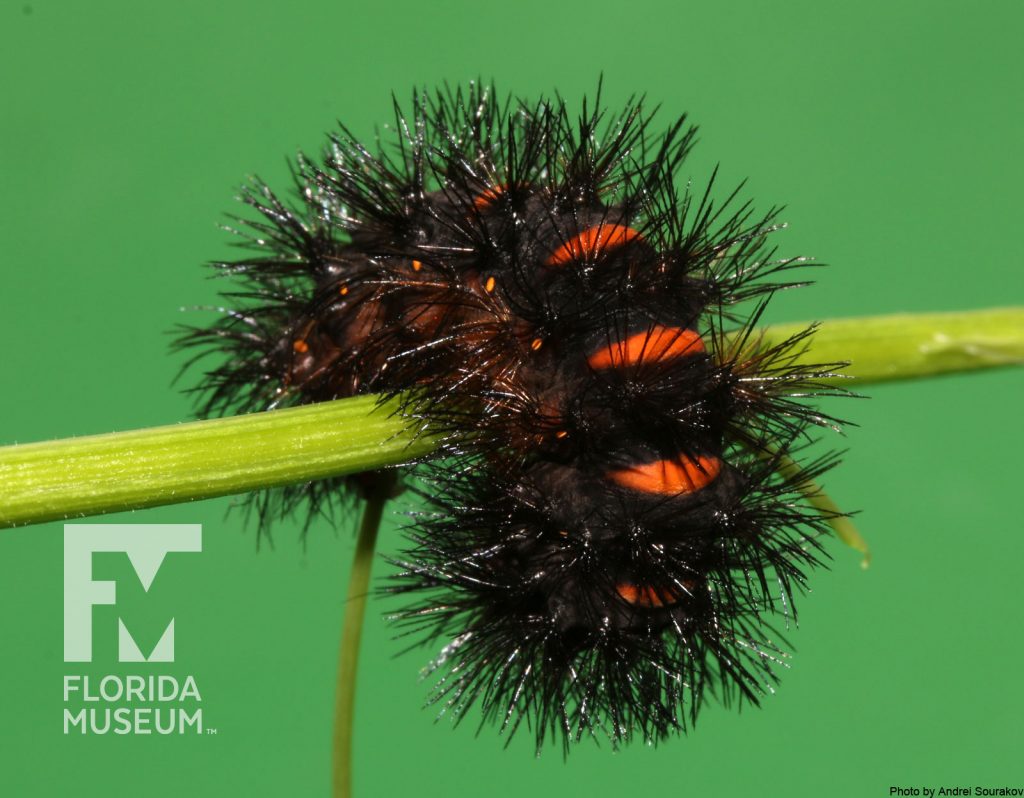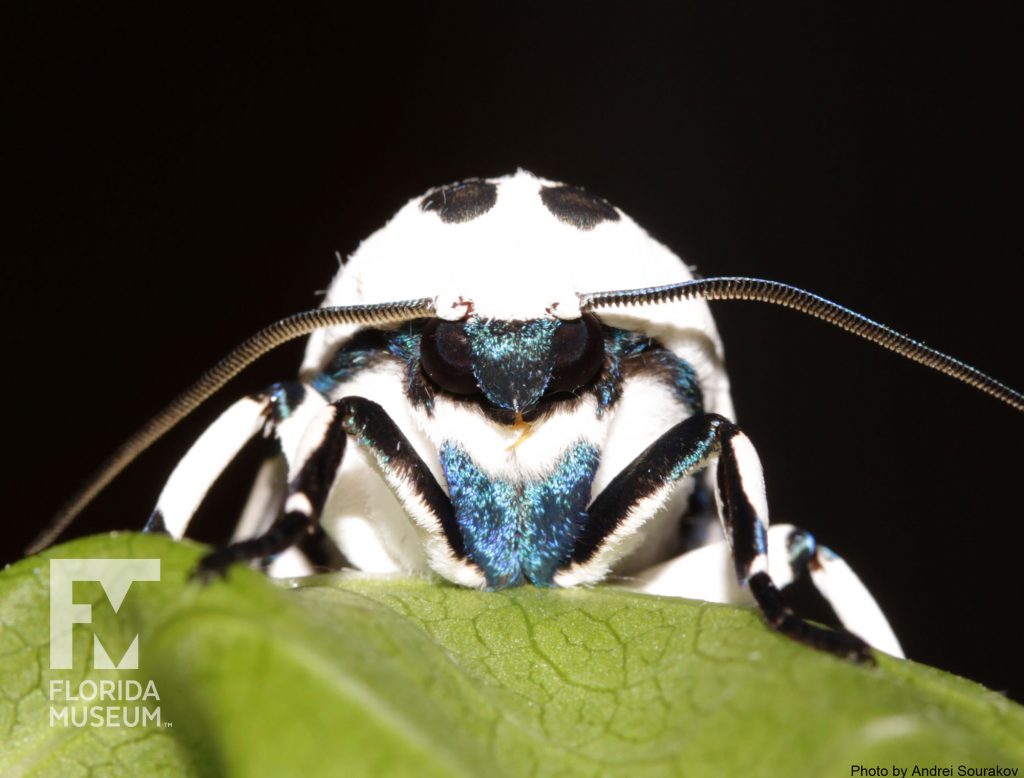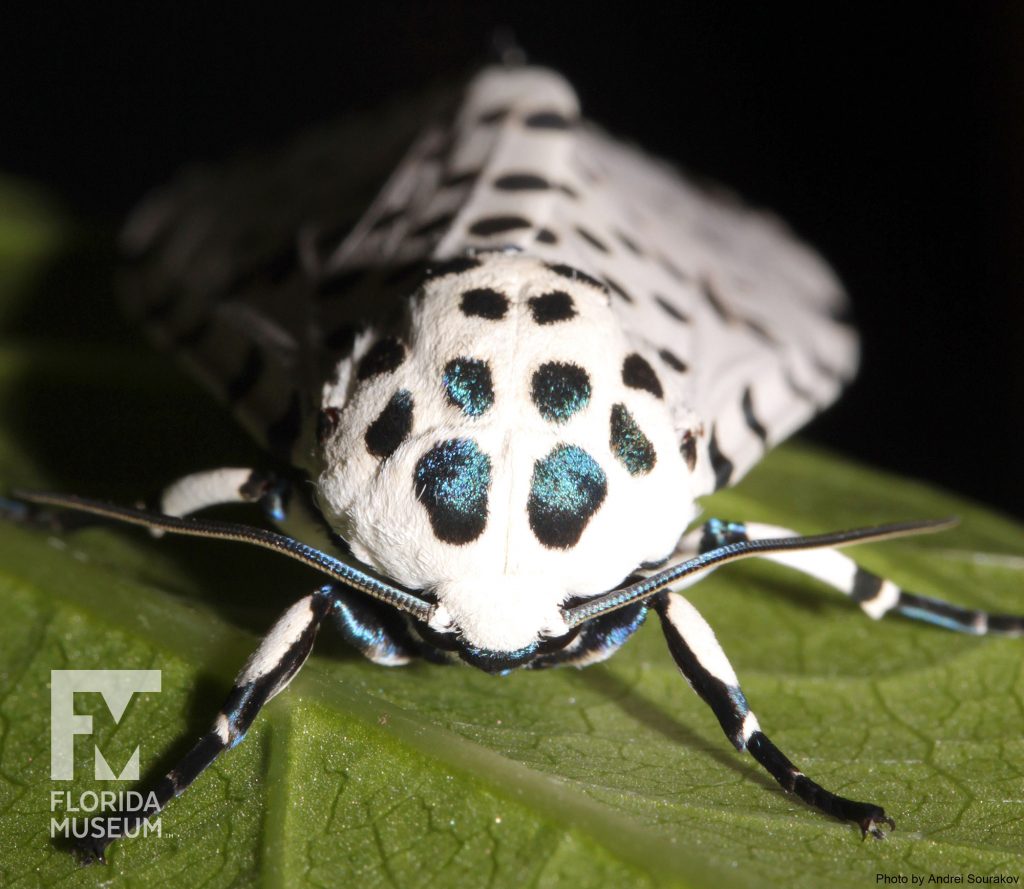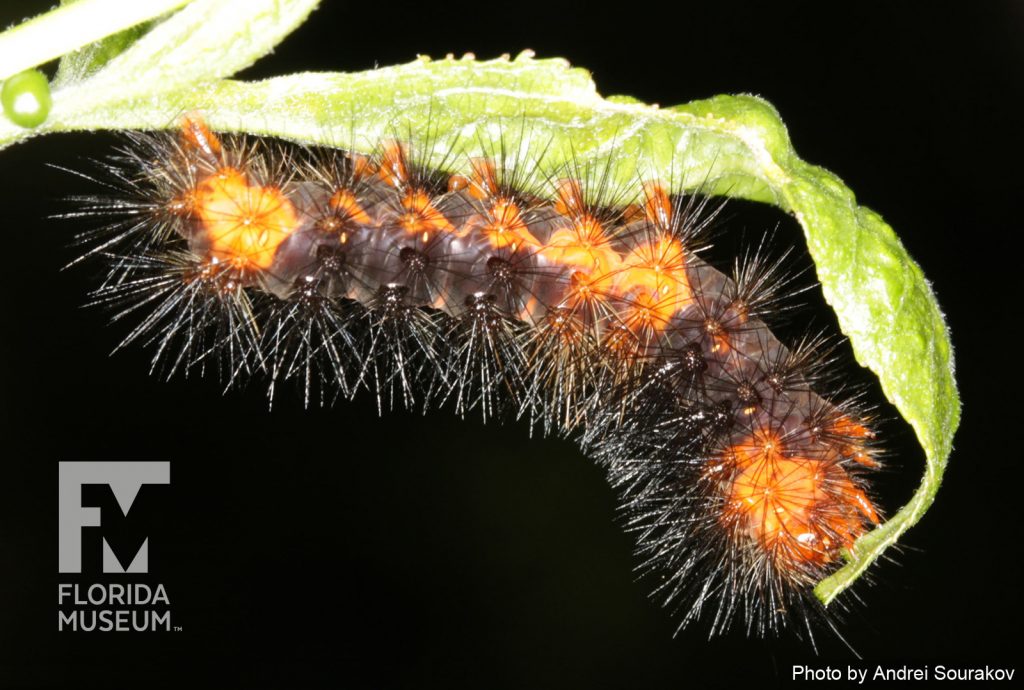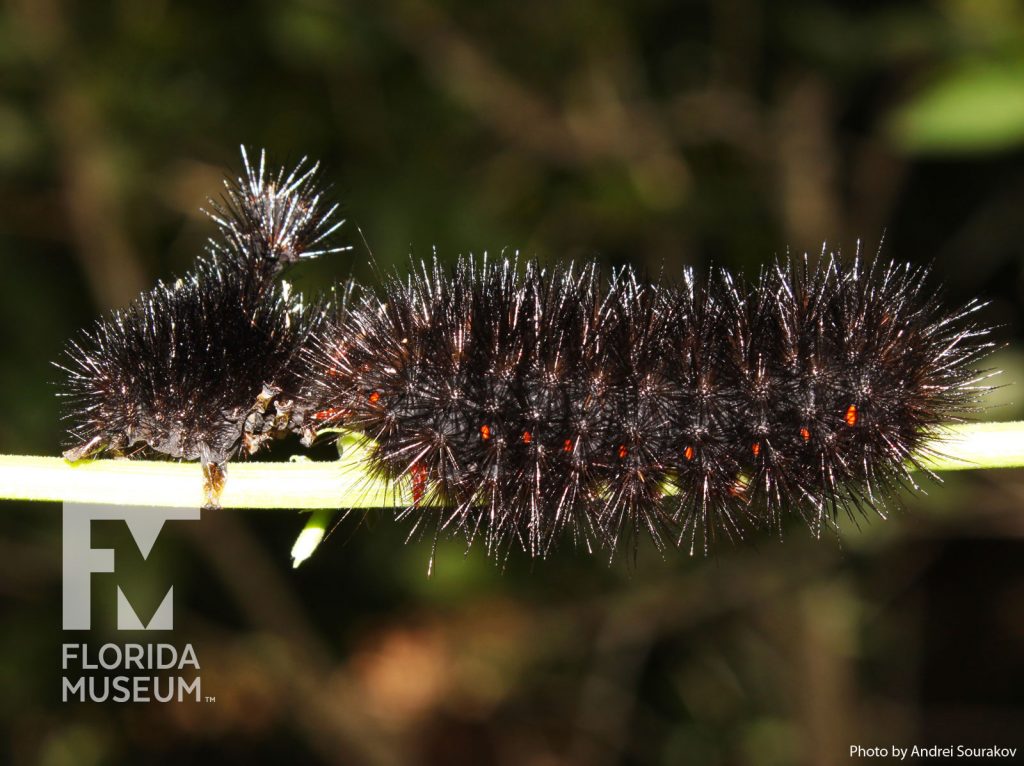The Giant or Great Leopard Moth, Hypercompe scribonia, has very distinct coloring, from its bright white wings with dark spots or rings, to its large abdomen which is marked with iridescent blue and orange on top. Researchers think that these markings might mimic those of the Regal Jumping Spider.
As the largest of the eastern tiger moths, males can grow to 2 inches long and females remain significantly smaller at about 1.2 inches long. Their wingspan varies from 2.25 to 3.5 inches.
They are more commonly known in their wooly bear caterpillar phase. As full-grown caterpillars, they are nearly 3 inches long and covered with thick black bristles. When they curl up defensively, they show red bands under the bristles. Many fuzzy caterpillars have bristles, known as setae, that cause irritation when handled. While the Great Leopard Moth is not known to cause irritation to bare skin, it is still recommended they be handled carefully.
Great Leopard Moths can be found across a great deal of eastern North America, from southern Ontario to Florida, and west to Minnesota and Texas. They are also found further south through Mexico into Panama.
Learn more
McGuire Center for Lepidoptera & Biodiversity at the Florida Museum
University of Florida’s Entomology & Nematology: Giant leopard moth (Hypercompe scribonia)
